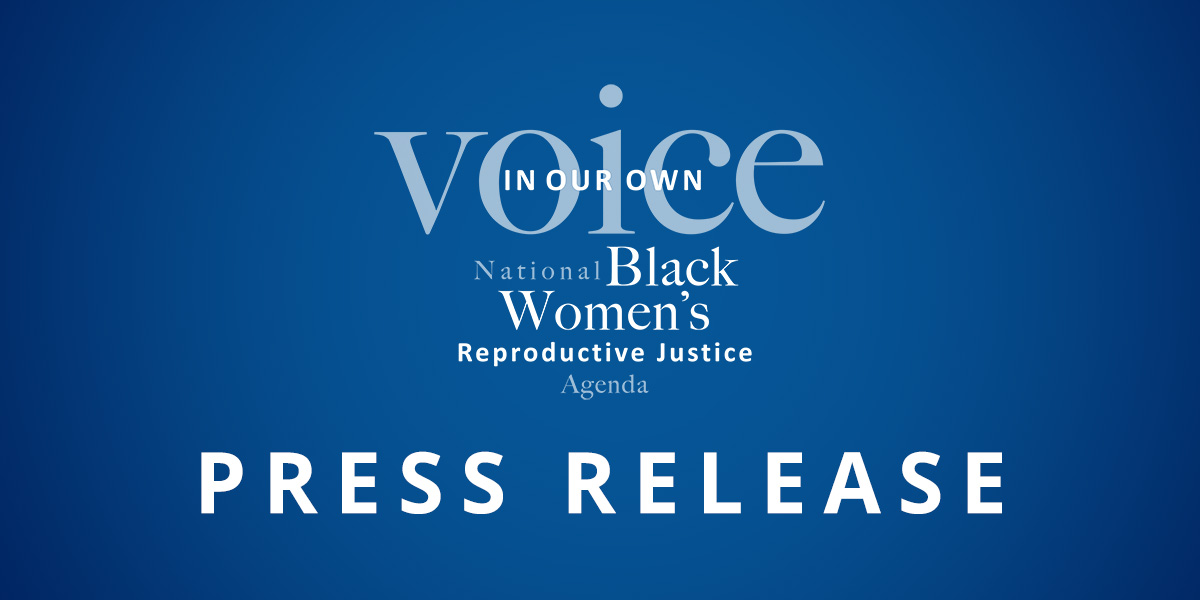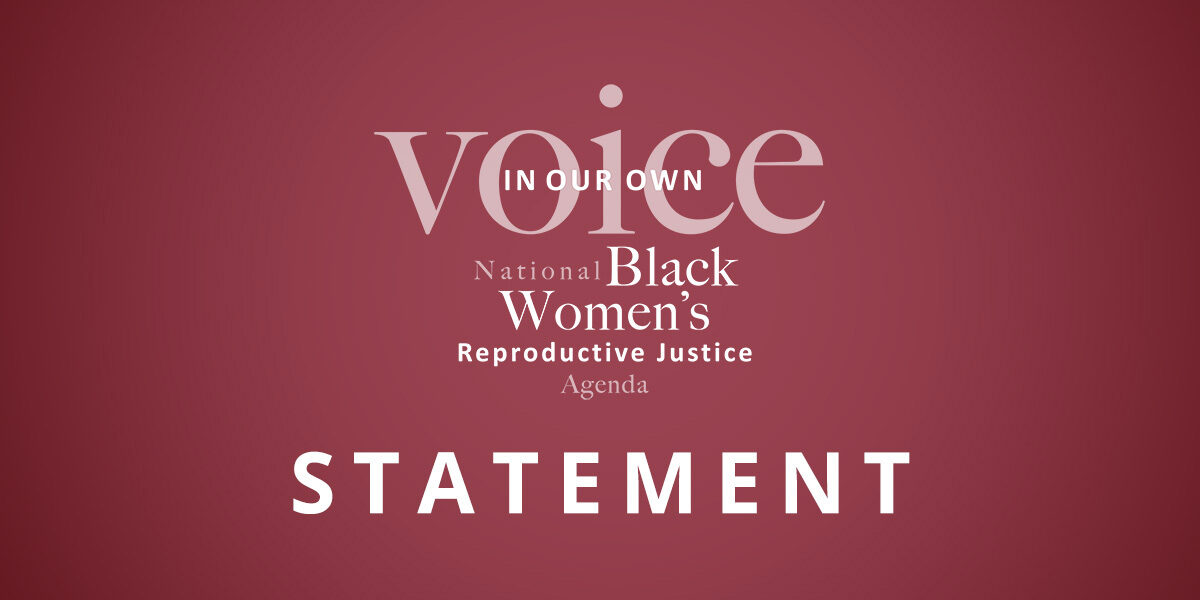NATIONWIDE — In response to President Trump’s Joint Address to Congress, Dr. Regina Davis Moss,…

Historic Improvements in Women’s Health and Well-Being: Reflecting on Ten Years of the ACA
On the tenth anniversary of the Affordable Care Act (ACA), we want to make one thing perfectly clear: the ACA is the greatest advancement for women’s health in a generation. Since its passage, the uninsured rate for women has nearly halved from 18 percent in 2008 to 11 percent in 2018. And while disparities in coverage still exist, women of color – who are more likely to be uninsured due to systemic inequities – have experienced particularly significant gains in coverage over the last decade. The ACA not only made important strides in reducing the number of uninsured women, it also brought about sweeping changes in the quality of insurance coverage for women. These improvements have made a meaningful difference for women’s health and economic security. Since the passage of the ACA, advocates across the country have been organizing and fighting to strengthen and protect these gains.
When the specter of ACA repeal under the Trump-Pence administration first raised its head, the women’s community quickly organized, knowing that we needed to be on the front lines to fight back against the egregious attacks that could once again leave women without access to the care they need. What emerged is a coalition of more than 50 organizations – operating collectively as the Women’s Health Defense Table – including reproductive health, rights, and justice groups, LGBTQ and HIV/AIDS advocates, and health policy organizations. Together, we helped to lead the fight against efforts to repeal the ACA in Congress and to roll back its protections through administrative regulations.
As we celebrate ten years of the ACA, we wanted to highlight just some of the law’s provisions that women’s health advocates have worked hard to include and preserve over the years. These are the ten most significant ways that the law has improved women’s health and well-being.
1. Expanding Medicaid: Medicaid expansion is a cornerstone of the ACA. Under the law, states that have elected to expand Medicaid eligibility have increased access to vital health care for groups who were historically left out, such as low-income parents, low-income women without children, and many low-income women with disabilities. Due to racism and other systemic barriers, women comprise the majority of adult Medicaid enrollees, and women of color comprise the majority of women enrolled in Medicaid. Medicaid is the nation’s largest source of reproductive health care, covering nearly half of all births in the United States and a vast majority of publicly funded family planning services – a greater share of which occurs in rural areas and among women of color. The expansion of Medicaid has significantly increased women’s access to critical primary and preventive health services, such as family planning services. Unfortunately, 14 states have refused to adopt Medicaid expansion, leaving over one million women, who would otherwise be eligible, without coverage.
2. Making coverage affordable: Before the ACA, lack of comprehensive coverage led to medical debt being the largest contributor to personal bankruptcy. Between 2010 and 2016, personal bankruptcy filings have fallen 50 percent. The ACA provides financial assistance to help make plans more affordable for women with low or moderate incomes. Women with incomes below 400 percent of the poverty line (about $50,000 for a single person, and about $100,000 for a family of four) are eligible for premium tax credits to help lower the cost of their monthly premiums. In 2019, more than 8 in 10 people qualified for financial help — for most people, that meant they could find premiums for $75 or less per month. In addition to premium tax credits, women with the lowest incomes are eligible for cost-sharing assistance to help reduce their out-of-pocket costs for health services. While the ACA’s financial assistance programs have made it possible for millions of women to get covered and access health care, affordability is still a major barrier for millions of women who remain uninsured and for families that do not qualify for assistance.
3. Ending discrimination against women: Prior to the ACA, many insurance companies in the individual market charged women higher rates for health insurance coverage than men. For example, a 25-year-old woman enrolled in a health plan could have paid as much as 81 percent more than a 25-year-old man enrolled in the same plan. It is estimated that gender rating cost women $1 billion annually. Fortunately, the ACA effectively banned this practice in 2014 in the individual market. This is critical for the approximately 8.1 million non-elderly adult women who have coverage in the individual market. The ACA also established the first comprehensive federal protection against sex discrimination in health care. Section 1557 of the ACA and subsequent regulations protect individuals from being discriminated against based on their race, color, national origin, sex, (including gender identity and sex stereotypes; and pregnancy and related medical conditions), age, and disability in certain health programs or activities. Critical to this law is the protection of those who live at the intersections of these identities. Unfortunately, the Trump administration has proposed a rule that would eliminate or roll back certain protections for millions of women and LGBTQ people.
4. Eliminating cost as a barrier to birth control: Nearly all women use contraceptives at some point in their lives, and access to contraception is critical to women’s health, economic security and equality. But not all women have equal access to contraception – in particular, women of color, low-income women, young people, LGBTQ people, and people with disabilities have often faced barriers to getting the contraception that they want or need, without coercion, shame or stigma. While critical gaps in access remain, the ACA made significant strides forward. Because of the ACA, more than 61 million women now have insurance that covers contraception with no out of pocket costs, and women saved $1.4 billion in out-of-pocket costs in one year alone as a result of this benefit. Women of color make up the majority of those who gained coverage for birth control and other preventive care without a copay. As of 2015, at least 17 million Latina women and 15 million Black women gained access to no cost birth control thanks to the birth control benefit.
5. Covering preventive services for women: Prior to the ACA, insurers were under no obligation to provide coverage, control out-of-pocket costs for those seeking care, or cover a full range of benefits. One in five women postponed or went without preventive care because of cost. Low-income women and women without insurance, populations that are also disproportionately women of color, were especially likely to delay or go without needed health care. But, by covering preventive services with no cost-sharing, the ACA has enabled over 20.4 million women, with the greatest gains seen for women with low incomes, to access essential care and services such as annual well-woman visits, mammograms, screening for cervical cancer, counseling for sexually transmitted infections, and screening and counseling for interpersonal and domestic violence.
6. Requiring coverage for people with pre-existing conditions: Nearly 68 million women—more than half of girls and non-elderly women in the country—have preexisting conditions. The ACA bans health insurers from charging higher premiums, reducing benefits, or denying women health insurance coverage because of pre-existing conditions, including pregnancy or having had a C-section, and other chronic conditions like HIV, high blood pressure, diabetes, and lupus. This essential policy is especially important for women of color, who experience disproportionately high rates of preventable diseases and pre-existing conditions due to structural racism and other forms of inequities in the health care system.
7. Covering maternity care: Before the ACA, only 12 percent of individual market plans covered maternity care, and often only in the form of an expensive rider that could be added to a plan. Because of the ACA, 8.7 million women gained coverage for prenatal and postnatal doctor visits, gestational diabetes screenings, labs and medications needed during pregnancy, newborn baby care, and more. At a time when Black and Native women are 2.5-3.1 times more likely to die than white women during pregnancy, at birth, or postpartum, maternity coverage is paramount.
8. Supporting parents who are breastfeeding: Despite the health benefits associated with breastfeeding, many women who choose to breastfeed struggle to do so for the recommended duration. Returning to work presents a particular and significant challenge to continuing to breastfeed, especially for those women, disproportionately women of color, who work in lower-wage jobs like retail or restaurants. The ACA, however, represents the first-ever nationwide effort to reduce barriers breastfeeding and provides increased access to breastfeeding supplies, counseling and support. These services include coverage for lactation counseling and breast pumps with no cost-sharing, and requirements that employers provide employees with reasonable time and a location to express milk while at work.
9. Expanding access to coverage for young adults: The ACA also marks a historic coverage expansion for young adults, outpacing every other age demographic. This is in large part due to one of the most popular provisions of the ACA – the expansion of dependent coverage to allow young adults to stay on their parent or guardian’s health plan until the age of 26. This provision allows millions of young women to remain covered while they seek educational and economic opportunities without fear of losing their already vulnerable economic stability because of high healthcare costs.
10. Strengthening Medicare: Women represent 56 percent of Americans aged 65 years and over, almost all of whom are enrolled in Medicare. Thanks to the ACA, the 32 million women who have coverage through Medicare can now receive additional preventive services without cost-sharing, including an annual wellness visit, a personalized prevention plan, mammograms, and bone density tests for women at risk of osteoporosis. The ACA also improves prescription drug affordability for older women by closing the Medicare prescription drug coverage gap, often called the “donut hole.”
In spite of – or perhaps because of – these very clear ways that the ACA has improved women’s lives, the current administration and Republicans in Congress have relentlessly attacked and undermined the law. But no matter what – as the Supreme Court hears the landmark cases of Trump v. Pennsylvania and Texas v. United States where the entire ACA, including health coverage for 20 million people and coverage of contraception, is at stake; as the administration continues to propose, finalize and implement regulations that undermine the ACA and the Medicaid program; as the future of health care coverage is fiercely debated among presidential candidates; and as our current public health crisis exposes weaknesses in our health care infrastructure and federal response – we will keep fighting.
Together, the Women’s Health Defense Table has and will continue to ensure that women’s voices and health care needs remain at the forefront of strategies to respond to policy threats and are centered as we look ahead to new policy opportunities on the horizon. For the next 10 years and beyond, we will fight not only to protect the ACA but to strengthen and expand the law until every person in the United States has meaningful access to affordable, quality, comprehensive care.
Asian & Pacific Islander American Health Forum
Center for American Progress
In Our Own Voice: National Black Women’s Reproductive Justice Agenda
MomsRising
NARAL Pro-Choice America
National Abortion Federation
National Council of Jewish Women
National Health Law Program
National Institute for Health
National Partnership for Women & Families
National Women’s Health Network
National Women’s Law Center
Physicians for Reproductive Health
Planned Parenthood Federation of America
Positive Women’s Network-USA
Power to Decide
Raising Women’s Voices
SIECUS: Sex Ed for Social Change



